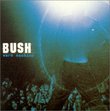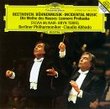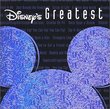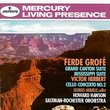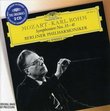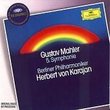| All Artists: Gregorian Chant, Josquin Desprez, Ensemble Clement Janequin, Ensemble Organum, Marcel Peres Title: Desprez: Missa Pange Lingua /Ensemble Clement Janequin * Ensemble Organum * Peres Members Wishing: 0 Total Copies: 0 Label: Harmonia Mundi Fr. Original Release Date: 1/1/1986 Re-Release Date: 2/12/1992 Album Type: Import Genres: Pop, Classical Styles: Vocal Pop, Opera & Classical Vocal, Historical Periods, Early Music Number of Discs: 1 SwapaCD Credits: 1 UPCs: 3149021312390, 093046123925 |
Search - Gregorian Chant, Josquin Desprez, Ensemble Clement Janequin :: Desprez: Missa Pange Lingua /Ensemble Clement Janequin * Ensemble Organum * Peres
 | Gregorian Chant, Josquin Desprez, Ensemble Clement Janequin Desprez: Missa Pange Lingua /Ensemble Clement Janequin * Ensemble Organum * Peres Genres: Pop, Classical
This recording presents the best performance of what is widely considered Josquin's greatest work. "Pange lingua" is a well-known hymn for the Feast of Corpus Christi; Josquin doesn't use the hymn-tune as a cantus firmus (... more » |
Larger Image |
CD DetailsSynopsis
Amazon.com essential recording This recording presents the best performance of what is widely considered Josquin's greatest work. "Pange lingua" is a well-known hymn for the Feast of Corpus Christi; Josquin doesn't use the hymn-tune as a cantus firmus (i.e., in long note-values in the tenor), but makes each movement a fantasia on the melody. The Mass isn't performed in complete liturgical context, but plainchant propers for Corpus Christi are included. On important feast days during the 16th century, plainchant was sung very slowly, with embellishments added by the singers. Ensemble Organum re-creates that practice here--it may strike some listeners as odd, but it's fascinating. The performance of Josquin's music is simply enthralling; the effect of the final "Agnus Dei" followed by the unadorned plainchant hymn is magical. --Matthew Westphal Similar CDs
Similarly Requested CDs |
CD ReviewsA welcome change from more conventional renditions Boileau0663 | Tournai, Belgique | 12/31/2003 (4 out of 5 stars) "This is a complete reconstructed Corpus Christi Mass sung alternately by two all-male group of French singers: the Ensemble organum, which is quite famous in France and elsewhere for its performance of early medieval choral music, and the Ensemble Clement Janequin. "Complete Mass" means you will hear the entry chant(introit), the gradual (the piece sung just before the reading of the Gospel), the Alleluia (the piece sung before and after the reading of the Gospel), the offertory (the piece sung while the bread and wine are brought to the altar) and the hymns pertaining to the feast of Corpus Christi, in which Catholics revere Christ in the gift of the Eucharist.The hallmark of the Ensemble Organum directed by Marcel Perez is the forceful and virile way in which they sing Gregorian Chant. If you are accustomed to the mellifluous accents of plainchant as sung by Benedictine choirs, you will probably find this rendition quite exotic, if not downright weird. Some will perceive this style as profoundly archaic, while others will find it uncannily Oriental. For me its triumphant tone evokes more the splendor of a royal court than the pious atmosphere of a monastery or church but we should remind ourselves that the Roman liturgy has not always been a low-profile affair, as it is now.For people used to listening to Renaissance music sung by mixed choirs, this recording may also come as a surprise if not a shock. But I guess this is probably a more genuine reconstruction since mixed choirs did not exist at the time to the best of my knowledge. The countertenors feature prominently in all the pieces by Desprez. Their somewhat shrill and adolescent-like voice may give you a hard time at first but I have come to like it, although I sometimes wonder how the mass would have sounded had they enrolled someone like sweet-voiced Andreas Scholl.If some adjustment might be needed for you to appreciate the countertenors, the basses and baritones will probably enthrall you right from the start. Almost each piece by Deprez starts with a contrast between their voices and those of the tenors and the effect is really magical.The cd comes with a booklet in which you will find two articles: one about Gregorian as it was sung in the XVIth century and one about the Mass composed by Desprez. The Latin texts with their English translation are conspicuously and regrettably absent as is any information about the singers themselves.One reviewer found the mixture of Gregorian chant and Renaissance music "magical". I do not completely feel that way. Plainchant and Desprez'choral music clearly represent two very different worlds and their being together on this cd, while certainly being instructive, may cause conservative listeners some discomfort. What I mean is that the music on this recording does not flow as easily and seamlessly as a performance by, say the Tallis Scholars with only Renaissance pieces. But if you are open to something new and original, I am sure you will like it but it may take some time. Remember, there are three hurdles you will have to overcome: the Oriental, archaic rendition of plainchant, the shrill voices of the countertenors and the contrast between the music of two very different eras.This is a challenge but, if you take it, the reward is quite worth the time and energy spent on it." Smooth and eloquent Sator | Sydney, Australia | 08/17/2005 (5 out of 5 stars) "Josquin Desprez (c.1440 - 1521) has always been the most celebrated of all composers of the Prima Prattica - the composers of the 15th to early 16th century who brought the Renaissance practice of polyphony to the peak of complexity. For centuries after his death he was widely hailed as the musical Michelangelo. And amongst his works the most famous of them all is the Missa Pange Lingua.
The Missa Pange Lingua is amongst the later of those that the Flemish master is known to have composed, but he did not live to see it published - it appeared in Nuremberg in 1539. There are at least 16 surviving manuscript and four printed editions of the work scattered across the whole of Europe, all of which bears witness to its widespread acclaim. It has even been acclaimed as the greatest of all Renaissance Mass setting. The main characteristic of Josquin's writing (now acknowledged to be something he derived from Obrecht) is his use of pairs of voice in imitation - with a continuous interplay between pairs of voices interchanging material in canon. This results in the Pange Lingua theme being treated with great freedom, often using only fragments of the theme as motifs, at other times quoting it full, in a free fantasia on the main theme. There are several excellent recordings of the Pange Lingua and which one to choose is partly a matter of personal preference. This version by Ensemble Clément Janequin and Ensemble Organum has many virtues that make it highly worthy of consideration. First and foremost comes the excellence of the counter-tenors Dominque Visse and Gérard Lesne, although all voices here make excellent contributions. As far as counter-tenors go they are exceptionally smooth toned - perhaps even more so than Pro Cantione Antiqua or the Ars Nova Seconda, and definitely far more so than the Hilliard Ensemble. The all male ensemble makes the overall feel of the texture darker than in other recordings by mostly mixed choirs. As a whole the ensemble also seems to 'gel' well while simultaneously allowing individual lines to stand out. Phrasing generally remains imaginative throughout, sometimes rising to moments of inspiration. Of equally great interest is the recreation of period styled practice of decorating ('florizare' or 'florifying') the line when singing Gregorian chant. The practice reached its peak in the 14th to 15th centuries and contrasts to the modern Solesmes style of singing Gregorian chant commonly heard, based on now long discredited theories of early practice. Period texts have survived in which precise performance practice details are explained, even including notated examples and these are used as the basis of the historical recreations on this recording. Amongst other interpretations the Tallis Scholars have a great sense of momentum and flair, by comparison with which this performance might seem a little subdued, although this is partly made up for by a greater intimacy of approach and by being less soprano dominated. A Sei Voci present a larger scale performance of heightened drama while avoiding excessive soprano dominance. Both of these are with mixed choirs. The recording is also excellent. The soundstaging is above average, with great ambience and 'space' around the voices. In this respect they enjoy some advantage over the Tallis Scholars, whose recording is somewhat dry and boxy by comparison. A Sei Voci enjoy a sound of greater dynamic range - a fact accentuated by their use of a greater number of singers per part. Overall the results are a smooth and eloquent though more subdued and introspective performance of the Pange Lingua set in liturgical context of Gregorian chant. As the only version with counter-tenors taking the top line recorded in excellent sound this well deserves a five star rating and will be first choice for many listeners." |

 Track Listings (11) - Disc #1
Track Listings (11) - Disc #1